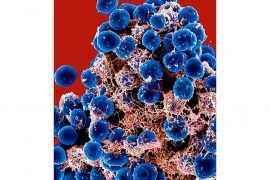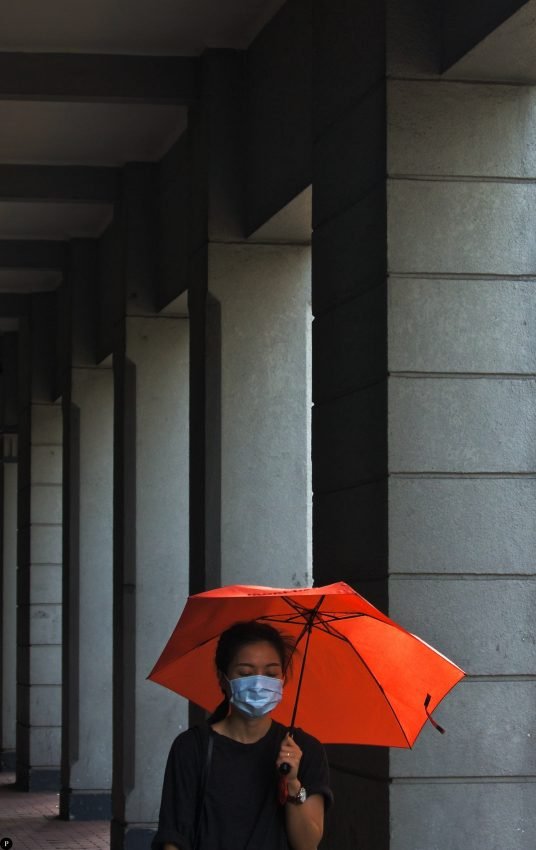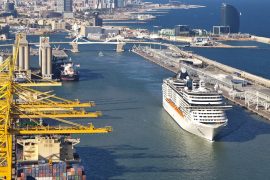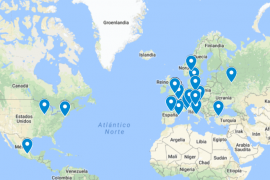It happened again. 2017 will go down in history as one of the hottest years on record. 2015, 2016 and 2017 have been confirmed as the three hottest recorded years. According to the World Meteorological Organization, this is a sign of the continuity of long-term climate change caused by an increase in atmospheric concentrations of greenhouse gases. And 2018 shows promise. In January several places have registered their highest temperatures of the month since temperatures started being recorded.
Add draught to heat. 2017 has been the second driest in Spain since 1965 according to results shed by the Spanish Meteorological Agency. The average precipitation figure stood at 474 mm, down 27% than its yearly average, according to the reference period 1981-2010.
There are some hopeful ideas like the one launched by the Montreal Protocol, since 1987 in that it paves the ground for reducing and eliminating gases that erode the ozone layer. This is a sample answer to a clear threat to life on this planet
Luckily, not everything around the climate is bad news. Despite some leaders flaunting their ignorance on how the climate System Works and their disrespect towards scientific evidence, there are now many more who come to agreements and set out guidelines to reach consensus on reducing emissions of greenhouse gases.
There are some hopeful ideas like the one launched by the Montreal Protocol, since 1987 in that it paves the ground for reducing and eliminating gases that erode the ozone layer. This is a sample answer to a clear threat to life on this planet. Therefore, despite reasonable doubts, the Paris Agreement switched on a light that allows relying on the fact that the human species is intelligent enough to avoid their own extinction.
The star measure, the commitment acquired is grounded on maintaining the world average temperature below 2 °C. Not much, but this global average hides what we can actually see: an increasing frequency of extreme episodes. Specially on its highest values: hotter summers, milder winters … draught. And snow storms, so rare and occasional that they catch us unaware; this inevitable consequence of a collective reckless attitude becomes a national controversial issue on management of a toll highway.
The news take place at breakneck speed, hotter or colder? Are we doomed to end up living in an arid desert? Are we heading towards the next ice age? Will we be able to harvest Siberia or will we get trapped in a big ice mass?
The warnings of what awaits us keep coming. In the short- or mid-term , the glaciers keep receding and the great ice masses get smaller gradually. The Antarctic melts and great ice cubes hit the headlines as the latest record ice cubes from the following iceberg. But what is really worrying when the Larson C platform melts is not its poor contribution to the rise of the sea level. What is worrying is that it deprives glaciers that feed it from the barrier that stored the ice that will never accumulate again.
We can still incorporate the United Nations’ Sustainable Development Goals to our decision-making processes and position them at the centre of the business model of our businesses
In the Artic, the situation is similar. The ice floe is disappearing. A true success story for maritime freight transport and a great opportunity for those who aim to explore ice-protected resources. A dramatic situation for the climate of the planet, at least, as we know it: i.e., less ice, less white surface, less solar radiation reflected … more heat and less fresh water.
Will Barcelona and other coastal cities get flooded? Can geoengineering supply the Mediterranean with a physical barrier that may shelter it from the ocean and, by means of a sophisticated pumping system, prevents a rise of the sea level on our coast. Well, this may well be an outrageously expensive solution that we simply cannot afford.
What seems to be a fact is that changes in salinity due to the inputs of fresh water from ice melting in the Artic will have an impact on the thermohaline circulation. The wonderful ocean conveyor belt, since its last ice age, distributes the temperature received by the planet and that allows the climate as we know it to date.
Have we broken the climate? Not enough, yet. We still enjoy four seasons. We still can change our individual behaviour to adapt to a more sustainable consumer model. We can still incorporate the United Nations’ Sustainable Development Goals to our decision-making processes and position them at the centre of the business model of our businesses.
We can still remain below the fateful temperature increase of two degrees centigrade that would slow down the ocean’s conveyor belt, a true miracle of nature that brings to our latitudes the heat of a sun from the Gulf of Mexico. If we look the other way, thinking that winter is weaker than the wolf, we run the risk of losing the ally that can avoid arctic cold to extend across Europe.
No, we have not broken the climate but we have certainly demonstrated our capacity to do achieving it. The issue is, are we intelligent enough to adopt in our sphere of responsibility the decisions that allow us to continue enjoying the climate we like? Can we do it without destroying the planet and respecting the dignity of all the people living in it? I hope the answer is yes, and look forward to sharing this along the way.




















